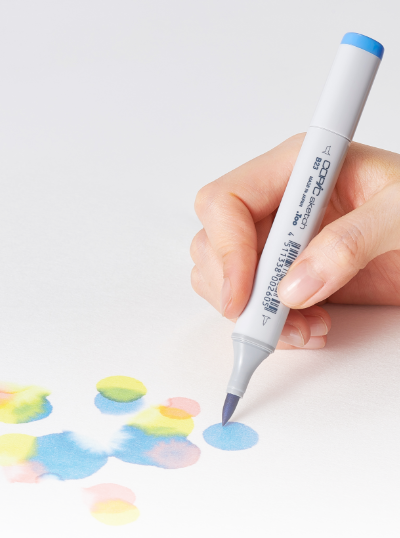The Basics : Blending Techniques
01-05-2019
Coloring Basics

Coloring in a zig-zag motion creates textures.

Coloring in small circles creates evenness.
Color Blending
Color with Super Brush nib in sweeping stroke with first color.

While it is still wet, add second color from the opposite side. Lift the pen up at the end of the stroke.

Go back to the first color and blend the border before drying. Add a lot of ink and really soak it by coloring in circles again.
Two Ways to Express a Boundary Line Between Different Colors
Sharp

Blurry
If you apply the dark color first, the lighter color may blur the boundary line between two colors.

Read More Articles
The Best Papers for COPIC Acrea
How to Layer with Acrea on Various Types of Paper Hello Copic readers! In our previous blog, we wrapped up our discussion on how to use ...

Copic Acrea with Copic Ink
How can Acrea be used with Copic Ink? Greetings Copic readers! In our previous blog, we discussed how Acrea compares with Copic Multil...

Copic Acrea with Multiliners
How does Acrea compare with Copic Multiliner Pens? Greetings Copic readers! In our previous blog, we discussed how Acrea compares to the ...

Copic Acrea with Copic Markers
How does Acrea compare with Copic Markers? Hello Copic readers! In our previous blog, we introduced the NEW Copic product; the Acrea pa...






